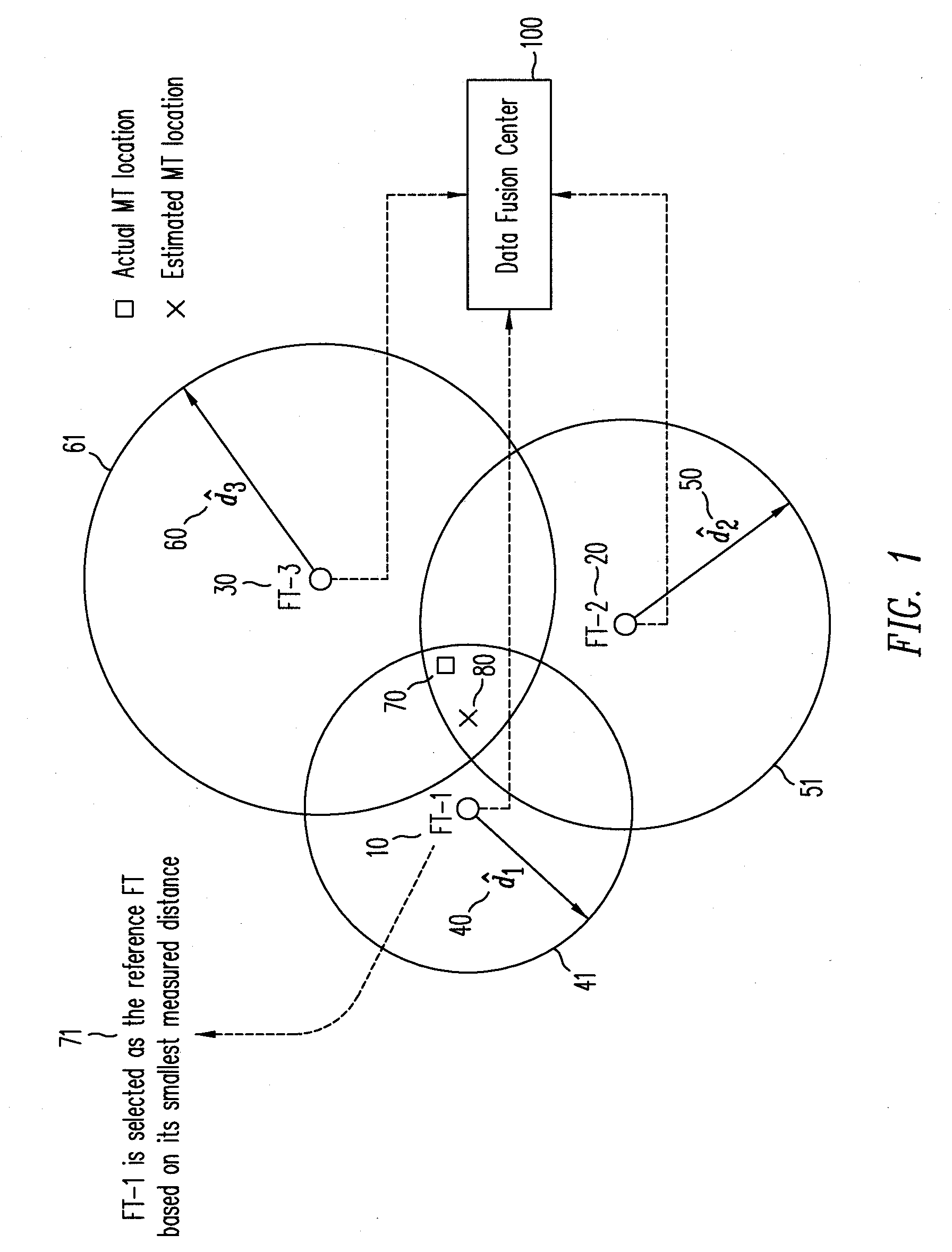Method for an improved linear least squares estimation of a mobile terminal's location under los and nlos conditions and using map information
a mobile terminal and location technology, applied in direction finders using radio waves, instruments, reradiation, etc., can solve the problems of reducing the computational complexity and eventual localization error of high-accuracy techniques, and achieving low complexity. , the effect of improving the location accuracy
- Summary
- Abstract
- Description
- Claims
- Application Information
AI Technical Summary
Benefits of technology
Problems solved by technology
Method used
Image
Examples
Embodiment Construction
[0029]FIG. 1 shows a wireless communication system in which N fixed terminals (FTs), labeled 10, 20 and 30 respectively, are provided. As shown in FIG. 1, x=[x,y]T is an estimate of the mobile terminal (MT) location 80, xi=[xi,yi]T is the position of the i-th FT, {circumflex over (d)}i is the measured distance between the MT and the i-th FT (labeled 40, 50 and 60 for each of i=1, 2 and 3). Distance {circumflex over (d)}i is modeled by:
{circumflex over (d)}i=di+bi+ni=cτi, i=1, 2, . . . , N (1)
where τi is the measured time of arrival (TOA) of the signal at the i-th FT, di is the actual distance between the MT and the i-th FT1, ni˜N (0, σi2) is an additive white Gaussian noise (AWGN) with zero mean and variance σi2 at the i-th fixed FT, and bi is a positive distance bias introduced due to LOS blockage, which is zero for LOS FTs. In this description, the measurement variance is assumed the same for all the FTs (i.e., σi2=2). In other embodiments, the noise variances may be different. ...
PUM
 Login to View More
Login to View More Abstract
Description
Claims
Application Information
 Login to View More
Login to View More - R&D
- Intellectual Property
- Life Sciences
- Materials
- Tech Scout
- Unparalleled Data Quality
- Higher Quality Content
- 60% Fewer Hallucinations
Browse by: Latest US Patents, China's latest patents, Technical Efficacy Thesaurus, Application Domain, Technology Topic, Popular Technical Reports.
© 2025 PatSnap. All rights reserved.Legal|Privacy policy|Modern Slavery Act Transparency Statement|Sitemap|About US| Contact US: help@patsnap.com



